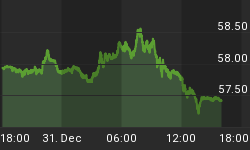Mars, aka the Red Planet, is a freezing, faraway, uninhabitable planet that has fascinated the human race for centuries--and for good reason. After all, our home planet and Mars are like fraternal twins that slowly grew apart over eons of time. Four billion years ago, both planets were warm, carved with rivers and pools of liquid water and sheathed by protective atmospheres--it’s a different story today with Mars a hostile desert enveloped by a thin miasma of carbon dioxide and irradiated by deadly galactic rays, while its twin planet is a sensationally fertile orb and the universe’s cosmic jackpot of life.
That’s a big reason why we are bent on turning back the hands of time and making Mars humankind’s next planetary home.
From NASA’s planned Moon to Mars mission to Elon Musk’s ambitious plans to use a SpaceX Starship to eventually colonize Mars, the race to the Red Planet is in full swing.
Even Trump has observed that lunar trips are becoming banal and traveling to Mars would be far more exciting.
Only there’s the small matter of how exactly to stay alive when there.
A constant stream of solar energetic particles (SEPs) and galactic cosmic rays (GCRs) would mean exposure to a lethal radiation shower; a super-thin atmosphere with less than 1% the density of earth’s atmosphere not to mention the frigid temperatures averaging around minus 80 degrees Fahrenheit and up to minus 190 degrees Fahrenheit at the poles.
This is where our robot friends can lend a helping hand by doing the dirty work for us.
Built for Mars
Building machines to operate successfully in the Martian environment is no mean feat. As AI Tadros, VP of Space Infrastructure and Civil Space at Maxar Technologies, has revealed, Mars’ is a very unique and extreme environment, even for space robotics.
The robotics must be able to not only to survive this harsh environment, but also successfully perform tasks such as digging and drilling to enable scientific investigations. Tadros should know--Maxar Robotics is the company that builds the robotic arms for NASA’s Mars rovers.
Luckily, we already have a nice precedent here in the form of the Curiosity rover and the Insight lander, both of which have been exploring the surface of the lonely planet with varying degrees of success. However, the next generation of mechanical pioneers we will be sending to Mars in the near-future will be even more sophisticated, using AI, novel propulsion methods and more versatile smallsats that can meet the challenge of colonizing the planet
Smart robots might even help us solve Fermi’s paradox.
Related: India's Tech Sector Takes A Hit On Supply Issues
Some scientists see Mars as a planetary mausoleum of dead microbes, and suspect that digging deeper into the surface might turn up evidence for life--which would be a first for anywhere outside our planet. NASA’s humanoid robot might be able to do just that.
The Valkyrie Robonaut 5 (R5) robot, or R5, is a bipedal droid from NASA that has been designed to do all the repetitive and dangerous things that humans are too bored, busy or susceptible to radiation to perform. Well, at least in theory.
Our biggest problem has been that even our most advanced bipedal robots still have trouble doing things like walking in straight lines, opening doors and climbing out of jeeps. So, NASA went to work with Northeastern University to build a highly dextrous, bipedal robot that can not only move around on the Martian surface but autonomously make decisions and accomplish tasks.
R5s will be able to exit confined areas, walk downstairs, bend over, stand up, stay balanced in rough terrain and pick themselves up if they fall. Their higher level of flexibility will allow them to do a lot more than just capture cute images of the planet. These robots could even tend the station when the crew isn’t there, and thus improve crew productivity.
Finding organics on Mars will help guide our future mission strategy.
Colonizing Mars a Possibility
The sheer environmental and logistical difficulties involved in sending humans to Mars let alone establishing any kind of permanent or semi-permanent base makes it appear like a long shot. Brad King, CEO of Orbion, a company creating more efficient propulsion systems for smallsats, however, sees colonizing Mars as more of an economic than technological issue and believes it could happen in our lifetimes
We could be well on our way there.
Three interplanetary missions are scheduled to blast off in July 2020: NASA’s Mars 2020; ExoMars 2020, run jointly by the European Space Agency (ESA) and Russia’s Roscosmos; and the Mars 2020 mission of the China National Space Administration (CNSA).
The first mission aims to accomplish a first by collecting martian samples that will one day be returned to Earth.
The second plans to drill deeper than ever before beneath Mars’s surface, where signs of life may lie waiting.
The third would be China’s first successful Mars landing.
By Michael Kern for Safehaven.com
More Top Reads From Safehaven.com:

















